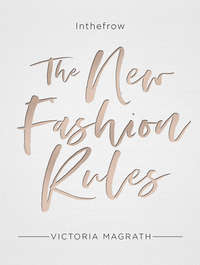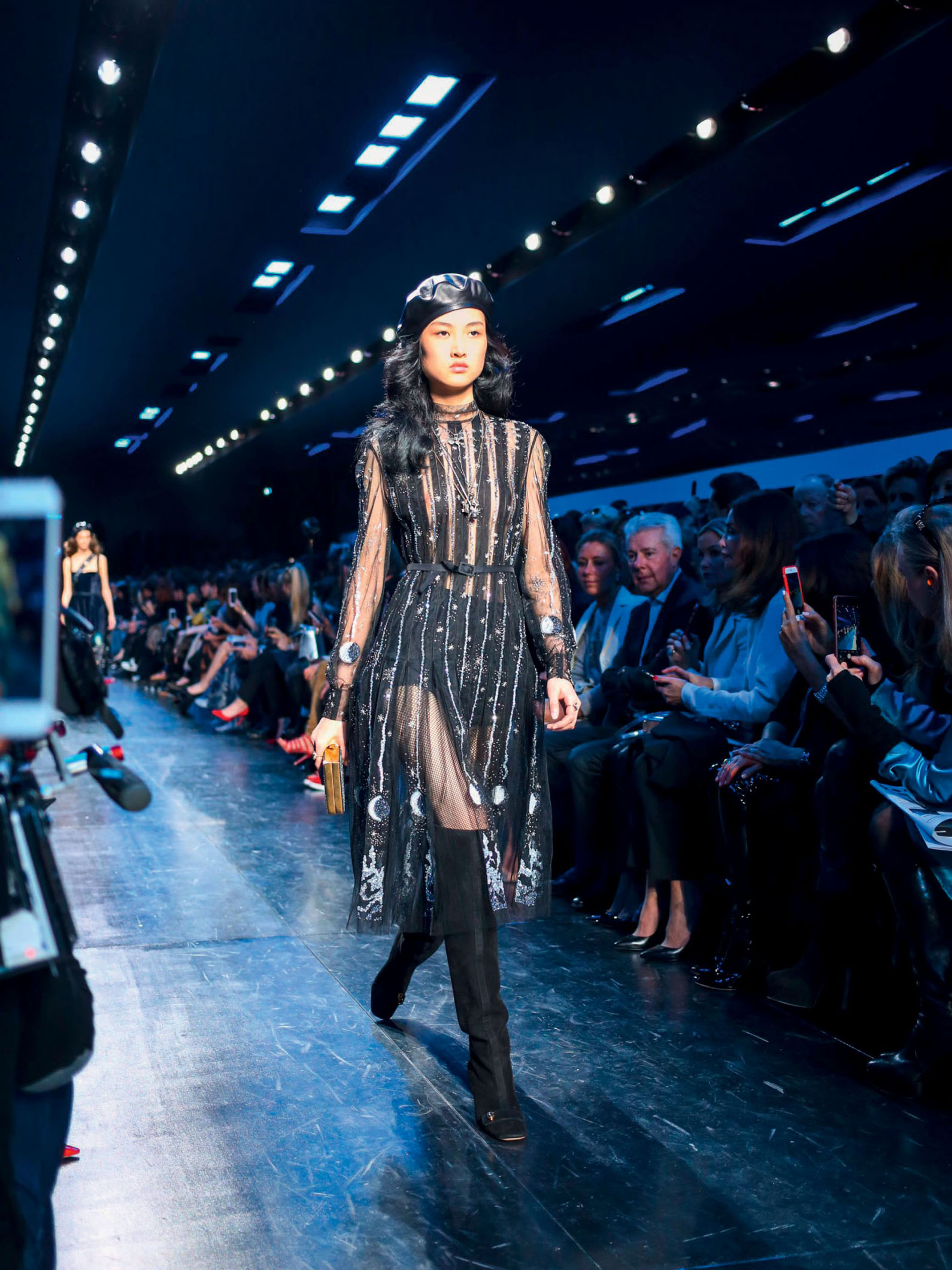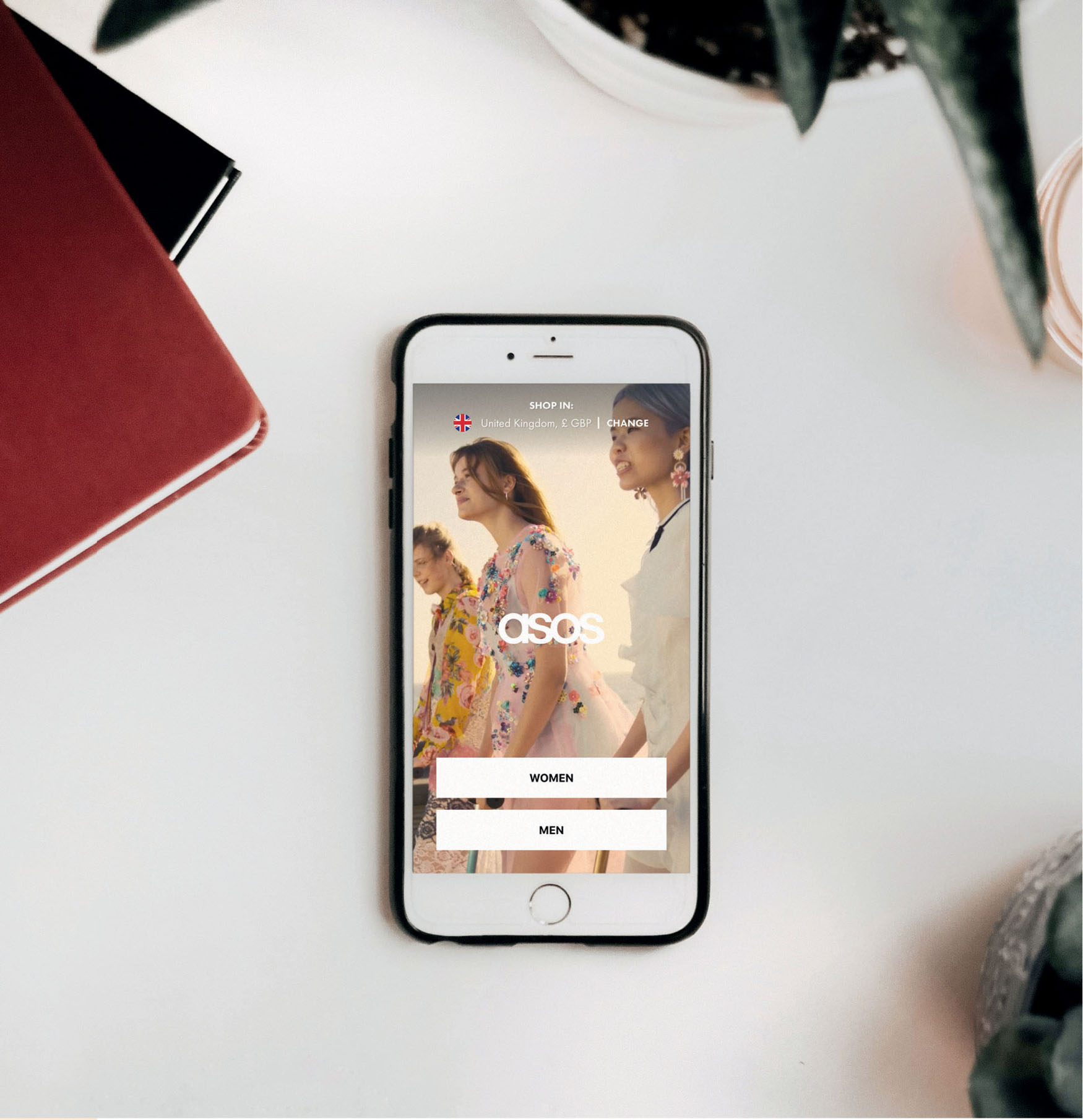
The New Fashion Rules: Inthefrow
Two years later, Pinterest became another haven for those looking for visual advice on what to wear that day. I have scrolled the Pinterest feeds for OOTD (outfit of the day) inspo many a time when I’ve been at a loss for ideas. Pinterest’s filtering system is particularly useful; if you want to find outfits featuring the Dior Book tote or Louis Vuitton Capucine bag, you can. Thousands of them.
You only need to look at the abundance of university courses that have been established since the early 2000s, based on varying fashion topics from business to marketing and fashion design, to know that people want to learn more, see more and do more with fashion. But mainly, they want to dress better and feel better, and it’s because of the abundance of inspiration hitting their eyes every time they scroll.
Fashion is no longer an interest for a select few. It’s been opened up, democratised and offered up to the audience on a plate. In previous years, you would only see the latest Chanel Cruise Collection images if you actively searched for them. Now, they’re at the top of your newsfeed, gaining traction and being shared profusely – probably by you. The audience is hungry for the information, brand awareness is growing, bloggers are wearing the latest collections before they’re even on the shelves and everyone else wants to buy into these brands that their favourite online star is wearing every day. It’s an information and inspiration overload.

Christian Dior A/W17 (@inthefrow)
Even my mum, who has always liked fashion but not actively followed it or cared too much about brands and the industry, is trying new styles and outfits that she’s seen others wearing online. People are experimenting more, finding their own style and learning about trends, collections, brands and the way the industry ticks without even actively searching for that information. Personally, I’m so pleased to see more people gain their confidence and find an interest in the way they present themselves. If my wearing a short dress can inspire someone to buy it and wear a short dress for the first time, and feel amazing, then hell yes for inspiration. Let’s have more of it!
Where I look for fashion inspiration
Inspiration is everywhere. Like I said, you can’t escape it. But when I really want to find it, I do a number of things:
1. If I’m just hoping to be inspired by new items and how to wear them, I often spend a few hours going through the new-in collections of all my favourite online stores. Or, if I’m in the city, I’ll pop into their shops. Normally, you’ll quickly start spotting styles, shapes, fabrics or prints that overlap from store to store, so you can pick out the key pieces for the season.
2. Bloggers are popular for a reason – they’re often very good at spotting the best items in the stores. I find myself popping over to my favourite blogs when I’m in a funk and need some inspo, just to see what they’re wearing and how they’re styling.
3. Magazines are my go-to when I’m travelling. On planes or trains, if I have no work to do, I love opening the pages of Vogue, Elle and Porter magazine to check out the brand adverts and shopping pages, as they are often filled with the latest items to hit the stores.
4. Online magazines are another way to find fashion-styling inspo. I especially love Glamour online, which I am very proud to have started writing a fashion column for in 2018, as well as Marie Claire, Refinery29 and Cosmo. I just click through their latest fashion articles to see what’s trending.
5. Instagram, of course, is daily inspiration. Scrolling through my feed, I like to save the images that show items I want to buy or styles I want to try.
6. Pinterest is another weekly place I like to visit, to see what their top pins are and what others might be loving right now. Making your own pinboards also helps, when you want to save particular outfits or pictures that you love to come back to later.
7
July 2008
Retail goes mobile
What was the last phone app you used? Instagram, Twitter, Notes, Calculator, Mail? Whatever you want to do, there’s an app for it, and I hold my hands up in saying that I spend most of my life moving between about 10 apps on a daily basis.
When the iPhone app store was launched in July 2008, it was a space for games, social media apps and news sites. An assortment of 500 apps to kick-start what would become a rapidly growing hub of iPhone software. So rapidly growing that the number of apps now exceeds 2.8 million. The capabilities of our regular mobile phones got upgraded to the max and Internet efficiency enabled us to start using our phones on the go without having to wait 10 minutes for a webpage to load. It feels like a lifetime ago that the UK was upgraded to 4G in 2012, but now the idea that we used to survive on slow 3G connections seems laughable. It was 3G and 4G capabilities that catapulted ubiquitous mobile usage into the mainstream and now … well, we can buy anything we want from anywhere we want, as long as we have a connection.

(@benjaminrobyn/Unsplash.com)

(Billion Photos/Shutterstock.com)
Over the three years when I was researching for my PhD – focused on the app designs of our fave UK fashion retailers – I spotted all of the updates, upgrades and newly launched native mobile apps. Native apps are the ones you download on the app store that have been built specifically by the brand. It became a craze; every retailer needed one and they were all jumping on board, one after another.
These native apps and responsive mobile websites became more and more user-friendly as retailers started to realise just how important they were to sales. Larger buttons, scrollable images, one-click purchases and all that jazz. Just little tweaks that helped the mobile customer to shop the same way they would on a desktop, but in a handy, travel-sized format. The experience got so handy that it now encourages 66 per cent of ASOS’s customers to search and shop via their mobile. Very handy for ASOS, too.
While I was researching apps, I didn’t realise just how quickly I would fall out of love with them. They were so useful, but now I find myself heading straight to my web browser and searching for a website instead. It’s probably because I spend so much time on a desktop that I am used to shopping via a browser, and I’m in a habit of doing so. Perhaps I just need to give apps another chance, as it’s probably been three years since I used a retail app to shop. Yet ASOS (always innovating) have launched a feature on their native app that enables users to buy now and pay later. It’s only available via the app and will have acquired an entirely new audience for the brand. It’s such a clever concept and a brilliant way to keep people coming back to the mobile app time and time again.
However, as long as the retailer has optimised their website to be responsive to mobile screens, they’re likely to be benefiting from the huge waves of mobile traffic. Even for my blog, more than 50 per cent of my traffic is via mobile and tablets rather than a desktop computer. Brands had better make their mobile sites responsive, or their consumers won’t be.

(Sofie Delauw/Getty Images)
My most-used apps and why they’re amazing
Back when native apps were all the rage, I had app folders filled with my favourite high-street stores, so I could shop them on the go. But as I tend to use my browser for shopping instead these days, I thought I’d share the other apps that I use on my phone daily, and why they’ve become my go-to. I even checked my phone to see which were my most-used:
1. Instagram is number one, for obvious reasons. I’m almost embarrassed to say that 48 per cent of my battery life is spent on the ‘gram in 24 hours. I can spend hours just scrolling the feed, gathering ideas and swooning over how cute my friends’ dogs are.
2. Twitter is my place to read the news. I search through the latest trending stories and moments to catch up, and scroll the feed for a few minutes to see if I’ve missed anything happening in the blogging world.
3. Mail, of course. Every minute or so there’s a new email popping up, so I can’t escape it. I try to answer any emails as soon as they come in – I’m either proactive, or they will only be replied to the week after.
4. Lightroom CC is my go-to app for photo editing. It takes a bit of getting used to, but it allows for so much more control over your imagery, colours and style. I tend to edit on my desktop, but I’m using the app more and more these days.
5. WhatsApp is my way of keeping in contact with friends around the world. My best girlfriends are scattered across a few different continents, so we have a number of groups to allow us to continuously catch up.
6. Camera, because the iPhone camera just keeps getting better and better. Who needs a DSLR anyway?
7. Planoly is the app I use for planning out my Instagram feed. You can drag and drop your images around your picture board to create a faux feed, so you can check if your new photo will fit your aesthetic.
8. YouTube is my everyday go-to for relaxation and time out. If I’m doing my make-up in the morning, cooking, sitting in the bath, I’ll usually have a YouTube video playing in the background.
9. Notes I use daily. Whether I’m coming up with ideas and need to write them down, or need to send a note to my desktop from my phone over iCloud, I’ll write it into Notes and wait for it to appear on my other connected devices. I have Notes for most things going on in my life, to keep me organised.
10. Dropbox is my favourite for storage. My other half and I have one Dropbox between us that we throw work into when we need to ensure it’s backed up. Plus, it’s a great way to upload files from one device to another if your Airdrop isn’t working or if your device isn’t Apple.
8
March 2011
Kate sells out the Burberry trench
The fashion world went crazy when they saw the Duchess of Cambridge, Kate Middleton, wearing that Reiss dress for her engagement photos, and the Polly Pushlock Mulberry handbag on a flight to Canada back in 2011. The items sold out in stores faster than the photographs could be printed. In the same year, the Burberry trench coat she wore sold out within hours, as did a £40 Topshop dress she wore back in 2007. This was before the days of Instagram, Pinterest and Twitter, when online news outlets, TV shows and magazines were the first to pick up stories and publish them.

Then we saw Meghan Markle, now the Duchess of Sussex, selling out the stock levels of Scottish accessories brand Strathberry in 2017 when she carried their tote to a charity event. The world once again saw the power of the Royals, and other influential faces, for selling out products in abundance. I was in the midst of designing my own collaboration collection with Strathberry when the images of Meghan broke. I was delighted. It sure did throw some more eyes onto a brand that I had loved for years.
Viral products are a phenomenon. An item suddenly picks up hype and goes out of stock overnight. A celebrity might wear it, a blogger might style it or a social star is paid to promote it. Suddenly the world and their mother own it and it becomes the most coveted item on the web. You may have noticed it happen in recent years with the popularity of the Chloé Faye handbag, Dior feminism T-shirts, Valentino Rockstuds, Supreme clothing, the Chanel Boy bag or a pair of Yeezy trainers. The more people wear it, the more people want it.
I remember the days of Von Dutch baseball hats, Rockport boots, Burberry baseball caps and Juicy Couture velour tracksuits – trends that exploded organically, even before the web, image-sharing sites or blogs. But now we’re in a place where there are a multitude of platforms through which you can promote yourself and be noticed, and it takes just one significant moment, or a culmination of moments, to send a product into a viral frenzy.

Kylie Jenner in Von Dutch (Bauer-Griffin/GC Images/Getty Images)
How to spot and buy a viral item
This is a tough one – a huge social star with 100 million followers could share a product and it may go out of stock within hours. In that case, you’re out of luck unless you immediately google every retailer that might sell it. Use key words to describe the item you’re looking for, and the chances are Google will find it in the images or shopping tabs.
Viral items are not just the products that sell out before you’ve even spotted them, though. Rather, they’re the products that you see everywhere for a day or a week before they suddenly end up sold out in every store. Usually it’s because the blogging and Instagram community have caught on to a particular trend. They’re featuring it on their stories and Instagram feeds, so that product ends up going out of stock in a matter of days. That’s certainly what happened for the Aquazzura Christy pumps in 2015, the double-G Gucci belt, the black Balenciaga Knife boots, the Dior bandeau bra with the contrast straps and the Dior T-shirts from the same line by Maria Grazia Chiuri. All of these products were all the rage until the point when you couldn’t get your hands on them.
The best way to spot the items that are blowing up is to follow as many of the top fashion Instagrammers and bloggers as you can. If you start to notice one particular product appearing constantly during your scrolling, the chances are you’re looking at a viral product.
9
November 2013
Michael Kors is first to sponsor an Instagram ad
Can you even remember the days when you logged on to your social media account and it was only your friends’ pictures that would show up in the feed? I remember reading articles suggesting that Facebook was eager to start monetising the platform – to take advantage of the billions of accounts that logged in every day. I was so disappointed. I knew it would mean advert after advert slotted in between Natalie’s baby-scan photo and David’s booze-cruise snaps, and I didn’t want this friendly platform to change. But everything is different now. Nothing is free and you can’t spend a minute online without seeing someone promoting something or other. I can’t complain; as a blogger, I’m part of this issue.
Конец ознакомительного фрагмента.
Текст предоставлен ООО «ЛитРес».
Прочитайте эту книгу целиком, купив полную легальную версию на ЛитРес.
Безопасно оплатить книгу можно банковской картой Visa, MasterCard, Maestro, со счета мобильного телефона, с платежного терминала, в салоне МТС или Связной, через PayPal, WebMoney, Яндекс.Деньги, QIWI Кошелек, бонусными картами или другим удобным Вам способом.
Вы ознакомились с фрагментом книги.
Для бесплатного чтения открыта только часть текста.
Приобретайте полный текст книги у нашего партнера:
Всего 10 форматов